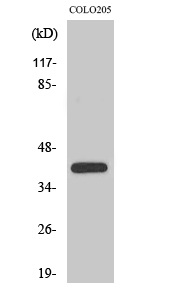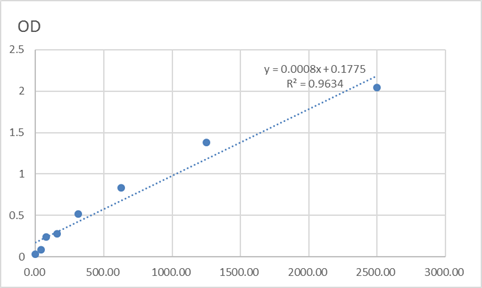Total XPA Cell-Based Colorimetric ELISA Kit
- Catalog No.:KA3431C
- Applications:ELISA
- Reactivity:Human;Mouse
- Gene Name:
- XPA
- Human Gene Id:
- 7507
- Human Swiss Prot No:
- P23025
- Mouse Swiss Prot No:
- Q64267
- Storage Stability:
- 2-8°C/6 months
- Other Name:
- DNA repair protein complementing XP-A cells (Xeroderma pigmentosum group A-complementing protein)
- Detection Method:
- Colorimetric
- Background:
- disease:Defects in XPA are a cause of xeroderma pigmentosum complementation group A (XP-A) [MIM:278700]; also known as xeroderma pigmentosum type 1 (XP1). XP-A is a rare human autosomal recessive disease characterized by solar sensitivity, high predisposition for developing cancers on areas exposed to sunlight and, in some cases, neurological abnormalities. Group A patients show the most severe skin symptoms and progressive neurological disorders.,function:Involved in DNA excision repair. Initiates repair by binding to damaged sites with various affinities, depending on the photoproduct and the transcriptional state of the region. Required for UV-induced CHK1 phosphorylation and the recruitment of CEP164 to cyclobutane pyrimidine dimmers (CPD), sites of DNA damage after UV irradiation.,PTM:Phosphorylated upon DNA damage, probably by ATM or ATR.,similarity:Belongs to the XPA family.,subunit:Interacts with XAB1 and RPA1. Interacts (via N-terminus) with CEP164 upon UV irradiation.,tissue specificity:Expressed in various cell lines and in skin fibroblasts.,
- Function:
- nucleotide-excision repair, DNA damage removal, DNA metabolic process, DNA repair, nucleotide-excision repair, DNA catabolic process, induction of apoptosis, response to DNA damage stimulus, response to oxidative stress,intracellular signaling cascade, induction of apoptosis by intracellular signals, DNA damage response, signal transduction resulting in induction of apoptosis, macromolecule catabolic process, response to radiation, response to UV, response to light stimulus, response to abiotic stimulus, response to toxin, regulation of cell death, positive regulation of cell death, induction of programmed cell death, cellular response to stress, DNA damage response, signal transduction, regulation of apoptosis, positive regulation of apoptosis, regulation of programmed cell death, positive regulation of programmed cell death, cellular macromolecule catabolic process,
- Subcellular Location:
- Nucleus .
- Expression:
- Expressed in various cell lines and in skin fibroblasts.
- June 19-2018
- WESTERN IMMUNOBLOTTING PROTOCOL
- June 19-2018
- IMMUNOHISTOCHEMISTRY-PARAFFIN PROTOCOL
- June 19-2018
- IMMUNOFLUORESCENCE PROTOCOL
- September 08-2020
- FLOW-CYTOMEYRT-PROTOCOL
- May 20-2022
- Cell-Based ELISA│解您多样本WB检测之困扰
- July 13-2018
- CELL-BASED-ELISA-PROTOCOL-FOR-ACETYL-PROTEIN
- July 13-2018
- CELL-BASED-ELISA-PROTOCOL-FOR-PHOSPHO-PROTEIN
- July 13-2018
- Antibody-FAQs



